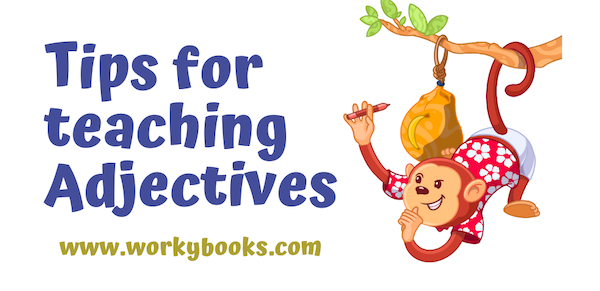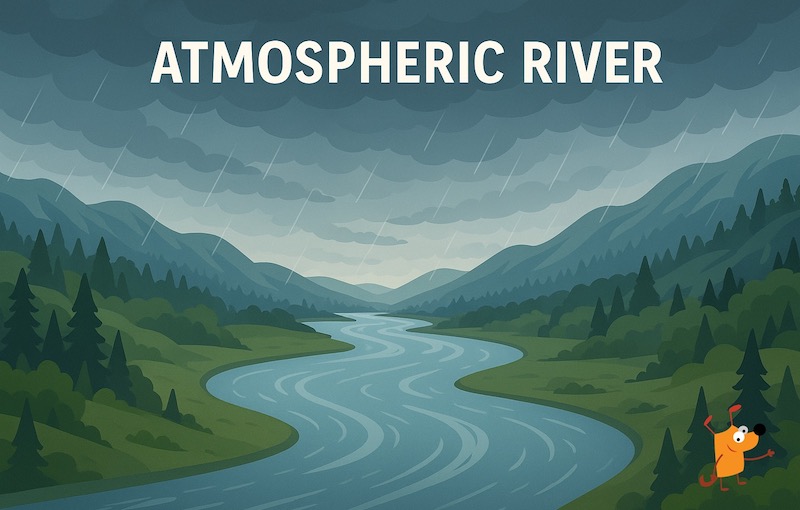Types of Clouds: A Complete Cloud Unit for Grades 3-8
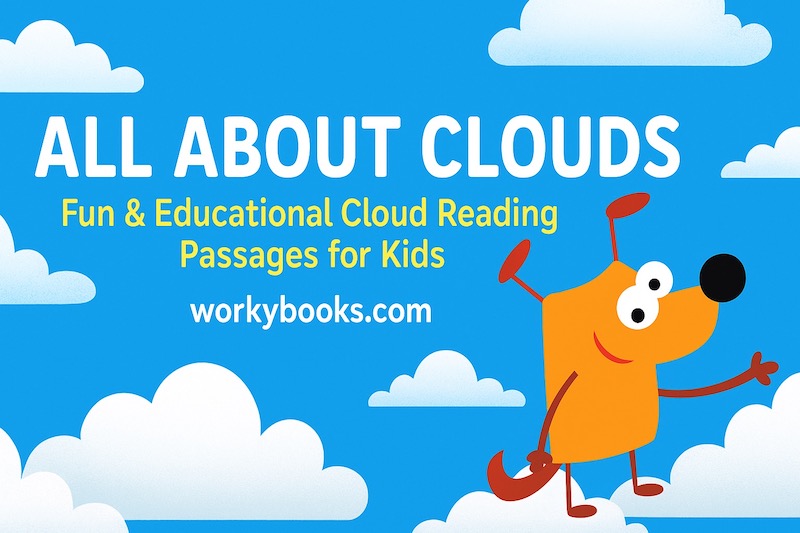
As educators, we’re always looking for topics that are visible, engaging, and perfectly suited to scaffold learning from basic observation to complex scientific understanding. Look up—types of clouds are that topic. They are a daily phenomenon that effortlessly bridges earth science, weather prediction, and climate studies.
This blog post outlines a complete pedagogical flow for teaching clouds, designed to take students from a foundational grasp in Grades 3-5 to an advanced understanding in Grades 6-8. For curriculum developers and teachers seeking ready-made, interactive resources, we’ll also showcase how these concepts come to life in our WorkyBooks digital library.
🌤️ Clouds- Pedagogical Approach
Teaching cloud types for children effectively requires careful sequencing. We’ve designed our passages using research-backed pedagogical principles:
Grades 3-5 students learn the three “parent” cloud types—cumulus, stratus, and cirrus—plus fog. These are the building blocks.
Grades 6-8 students then learn “combination” clouds (stratocumulus, cirrostratus) and precipitation-bearing clouds (nimbostratus, cumulonimbus). This requires layering the foundational concepts they mastered in elementary school.
☁️ Foundational Stage (Grades 3-5): Understanding the “What” and “How”
The goal here is concrete understanding and classification. Begin with direct observation and simple, memorable categories.
Start with the basics! “What are clouds?” or “What are clouds made of?”
Core Process: Move to “How do clouds form?” Simplify the water cycle into three key steps: evaporation (water turns to gas), condensation (gas cools and clumps on particles), and cloud formation.
Introduce the three basic types of clouds for kids: Cumulus (puffy, fair-weather), Stratus (layered, gray blankets), and Cirrus (wispy, high-up). Use clear analogies: cotton balls, blankets, and horse tails.

| Passage | What Students Learn | Key Vocabulary |
| What Are Clouds Made Of? | Clouds are water droplets and ice crystals floating in the atmosphere | water vapor, droplets, condensation |
| How Do Clouds Form? | Warm air rises, cools, and water vapor condenses onto tiny particles | evaporation, condensation, water cycle |
| Three Types of Clouds | Scientists classify clouds into cumulus, stratus, and cirrus families | classify, cloud families, altitude |
| Cumulus Clouds | Puffy, white clouds with flat bottoms that signal fair weather | cumulus, fair weather, updrafts |
| Stratus Clouds | Flat, gray clouds that spread like a blanket across the sky | stratus, layered, overcast |
| Cirrus Clouds | Thin, wispy clouds made of ice crystals high in the atmosphere | cirrus, ice crystals, high altitude |
| What Is Fog? | Fog is a cloud at ground level that reduces visibility | fog, ground-level cloud, visibility |
🌧️(Grades 6-8): Analyzing the “Why” and “So What”
In middle school, students are ready to deepen their analysis, combine concepts, and understand clouds as dynamic weather systems.
Start with ‘How to Identify Clouds.‘ Teach the altitude prefixes: Cirro- (high), Alto- (mid), Strato- (low). This turns a list into a system.
Expand the Taxonomy: Introduce the hybrid and precipitating clouds: Stratocumulus (low, lumpy layers), Cirrostratus (high, thin haze – sun halo!), Nimbostratus (the classic, steady rain cloud), and the mighty Cumulonimbus (the anvil-shaped thunderstorm cloud).
Deepen the Science by asking and answering more complex questions:
- “Why do clouds turn grey?” (Light can’t penetrate thick water droplets). This passage explains why clouds change from bright white to dark grey, especially before it rains. Kids will learn about light scattering, cloud thickness, and how cloud color can help us predict the weather.
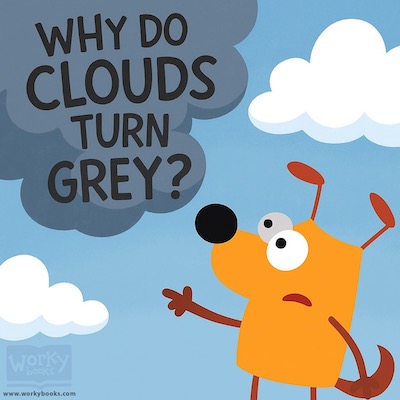
- “How do clouds make rain and snow?” (The collision-coalescence and Bergeron processes, simplified).
- “How can clouds help predict weather?” (Cirrostratus often mean rain in 24 hrs; Cumulonimbus mean now!).
- Connect to Systems: Link clouds to weather fronts. Cold front? Dramatic cumulonimbus. Warm front? Gradual nimbostratus. This shows clouds as symptoms of larger air mass interactions.
- Global Impact: Culminate with the big picture: “How do clouds affect Earth’s climate?”Explore their dual role: white surfaces reflect sunlight (cooling), but water vapor is a greenhouse gas (warming). This sparks critical thinking about climate models.
| Passage | What Students Learn | Key Vocabulary |
| How to Identify Clouds | Systematic observation skills using altitude, shape, and color | cloud genera, altitude classification, observation |
| Stratocumulus Clouds | Hybrid clouds combining puffy and layered characteristics | stratocumulus, hybrid formation, low altitude |
| Cirrostratus Clouds | High ice-crystal sheets that create halos around sun and moon | cirrostratus, ice crystal halos, optical phenomena |
| Nimbostratus Clouds | Thick, dark clouds producing steady continuous precipitation | nimbostratus, stratiform precipitation, continuous rainfall |
| Cumulonimbus Clouds | Towering storm clouds producing thunderstorms and severe weather | cumulonimbus, anvil top, atmospheric instability |
| Why Do Clouds Turn Grey? | Cloud color changes based on thickness and light absorption | light absorption, optical density, cloud thickness |
| How Do Clouds Make Rain and Snow? | Two precipitation processes: collision-coalescence and Bergeron process | coalescence, Bergeron process, precipitation formation |
🌬️ Interactive Features That Boost Engagement
At Workybooks, we know that reading passages alone aren’t enough. That’s why every cloud passage in our library includes interactive features designed to deepen understanding:
| Comprehension Questions | Vocabulary Activities | Graphic Organizers | Assessment Tools | Audio and Bilingual Support |
| Each passage includes multiple question types:-Literal questions — Check basic understanding-Inferential questions — Push deeper thinking-Text-evidence questions — Build close reading skills | Every passage highlights tier 2 and tier 3 vocabulary with:Student-friendly flash cards and matching activities. | Visual learning tools including:-Cloud classification charts-Compare/contrast diagrams-Cause and effect maps | Multiple choice questions-Short answer responses | Spanish translations for English language learners |
❄️Types of Clouds
Meteorologists classify clouds based on their appearance and altitude. These main categories help us understand the basic types of clouds that exist in our atmosphere:
i. Cumulus Clouds
Cumulus clouds are perhaps the most recognizable among all cloud types. These fluffy, white clouds look like cotton balls floating in the sky. They typically form on sunny days when warm air rises from the ground. Cumulus clouds usually indicate fair weather, making them a favorite sight for outdoor activities.
ii. Stratus Clouds
Stratus clouds form in flat, gray layers that often cover the entire sky like a blanket. These types of clouds create overcast conditions and can produce light rain or drizzle. When you see a gray, uniform sky with no distinct cloud shapes, you’re looking at stratus cloud formations.
iii. Cirrus Clouds
High up in the sky, cirrus clouds appear as thin, wispy streaks that look like they’ve been painted with a delicate brush. These clouds are made entirely of ice crystals and often indicate that weather changes are coming within the next 24 hours.
iv. Nimbus Clouds
Nimbus clouds are the rain-bearing cloud types that bring precipitation. The word “nimbus” means rain cloud in Latin. These clouds can combine with other types, creating cumulonimbus (thunderstorm clouds) or nimbostratus (steady rain clouds).
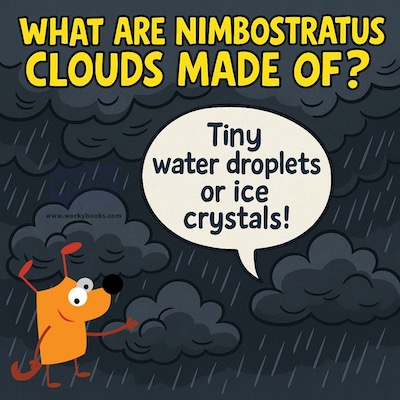
💧 Classroom Implementation Tips
Whether you’re building a full weather unit or just want high-quality nonfiction passages for science literacy, this teaching resource on Clouds offers everything you need. These resources help students observe the sky—and understand what they’re really seeing up there!
For Elementary Teachers (Grades 3-5)
- Start with observation — Have students draw clouds they see before introducing vocabulary
- Use the “Three Types” passage as an anchor — Return to it throughout the unit
- Make it physical — Cotton ball cloud models help kinesthetic learners
- Connect to daily life — “What clouds did you see on your way to school?”
For Middle School Teachers (Grades 6-8)
Connect to current events — Weather news, climate discussions, severe storm coverage
Activate prior knowledge — Quick review of cumulus/stratus/cirrus before introducing combinations
Emphasize the “why” — Students this age want to understand mechanisms, not just names
Use prediction challenges — Can students forecast tomorrow’s weather from today’s clouds?
👉 Explore the full set of NGSS-aligned Earth System’s passages now and help your students become science thinkers!
Join Thousands of Teachers Using Workybooks
Our curriculum-aligned resources help teachers save time while delivering high-quality science instruction. Whether you’re looking for cloud identification kids activities or comprehensive science for kids clouds units, Workybooks has you covered.

